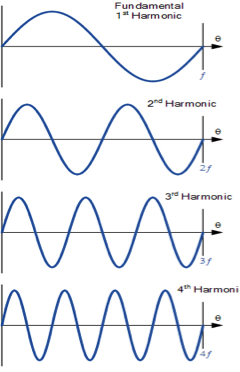Part 3: Harmonic Envelope Control The Harmonic Envelope control adjusts the amount of feedback in the circuit, trading-off transient performance and harmonics generation, allowing the sound signature to be adjusted between a modern tube preamp, a modern push-pull amplifier or a single-ended amplifier.

The difference between ‘classic studio’ and ‘push-pull’ is in the levels of harmonics. These are greater in the latter case (just as they would be in this kind of a tube amp in comparison to a studio preamp) and feature appx. equal amounts of 2nd order harmonics and 3rd order harmonics. There are similar relations between the even/odd harmonics at higher harmonics.
For the ‘single-ended’ signature overall, 2nd order harmonics are much higher than these of 3rd order, whereas the other harmonics fall-off in a similar manner with the even order harmonics in each pair significantly higher. This would be the case with a low/non-feedback SE Amplifier.
3D Holographic+ Matrix for Speakers®Based upon a fundamental understanding of how we hear, stereo separation is different at different frequencies. However, very few recordings and no playback system compensates for this issue. With the introduction of 3D Holographic Matrix® for Speakers, the iTube2 provides the means to specifically and correctly reproduce stereo recordings for both floor-standing speakers and desktop speakers regardless of price even US$100,000 speakers.
Our proprietary XBass+® and 3D Holographic+® enhancements are in fact ASP (Analogue Signal Processing) filters based on Alan Blumlein’s work. There is no DSP, therefore not handled in the digital, but analogue domain.

Microphones are not ears, whereas speakers + rooms and/or headphones are not really just microphones in reverse. As early as the 1930's, the inventor of modern stereo recording/playback systems - Alan Dower Blumlein - realised that microphone based stereo audio recordings distorted the 3D perspective in comparison to the real thing listening.
 Source: British Patent: 394,325
Source: British Patent: 394,325Alan Blumlein devised a compensator known as shuffler. for the speaker side of things and also did some work at the headphones end. Said compensation technology was implemented later by EMI as ‘Stereosonic’ process and applied to early stereo recordings (including some by The Beatles). The headphone compensator never was completed. At later time, inventors such as Bauer presented their takes.
In the end, both Blumlein/Stereosonic shuffling and the Bauer/Linkwitz/Meier cross-feed systems remain worthwhile. But attempts to correct a fundamental dichotomy or flaw in modern stereo recordings were unsuccessful.
What the iFi 3D-Matrix has to offer is an improvement over the previous corrective systems and we feel we have achieved this. And while there are of course parallels, which overlap with classic Blumlein shuffling and Bauer crossfeed, the iFi 3D-Matrix goes well beyond.
The iDSD micro was actually iFi's first product to contain 3D-Marix ready for both speakers and headphones. Only our Retro and iCAN Pro models share this technology, whereas 3D-Matrix headphones side was introduced in iCAN and its speakers side was to be found in iTube and now in iTube2 as well.
The whole line-out processing implements a Head Related Transfer Function (HRTF from here-on) that is designed to correct standard microphone recordings played back on speakers
XBass+ Matrix®Many speakers show limitations and deficiencies in low frequency response. With the introduction of XBass Correction® for speakers, the iTube2 provides the means to specifically bypass these limitations and correctly reproduce low bass frequencies through a wide range of speakers.
In a few days we will discuss the parts selection involved with iTube2. Stay Tuned